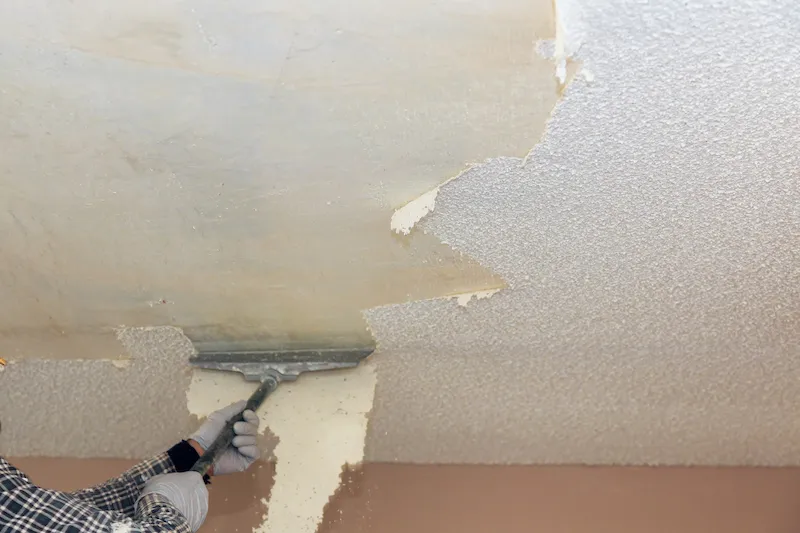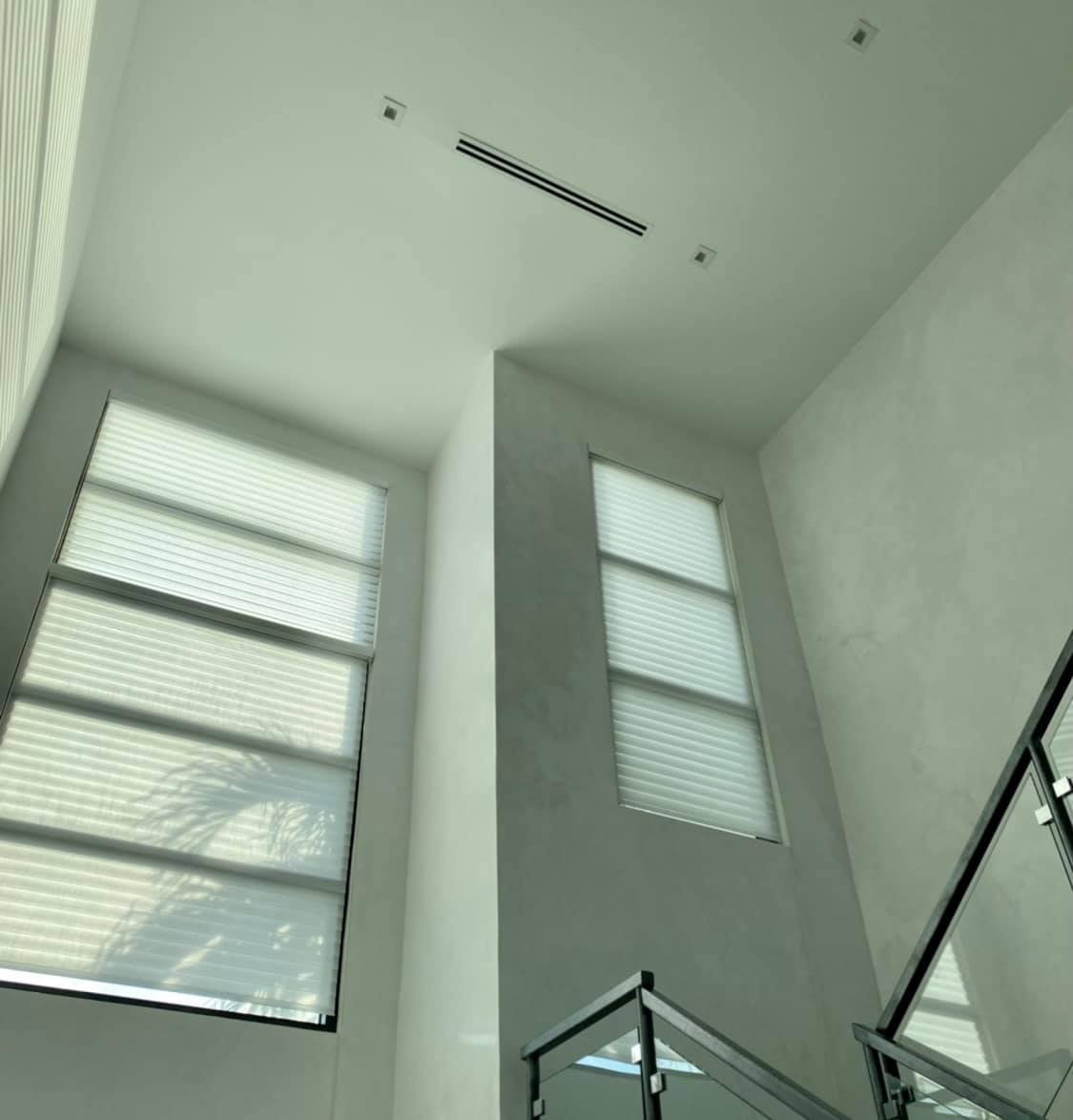knockdown ceiling texture
Knockdown texture is visually appealing, and it’s a great way to hide every small imperfection on the surface. It is a very popular texture that has been used in many new modern construction or buildings in the United States since the 1990s.
Knockdown Ceiling
Knockdown textures are the closer but a better version of the textured ceiling made with a trowel that gives you a subtle “stuccoed” outlook.
This texture includes spraying the ceiling with a drywall hopper or spray gun, making mud using drywall joint compound powder, and spraying the mud all over the wall. Then after 10 to 15 minutes, when it’s slightly dry, use the trowel to scrape the knockdown texture.
Like most other ceiling texture options, the knockdown texture is one of the excellent choices for adding depth to a space and concealing those minor flaws on the ceiling. However, to create this texture, you need to go through lots of work, and it’s also time-consuming. That’s why hiring expert services to create this texture is a good option.

Call Us Today!
Three Types of Knockdown Texture:
There are three original types of knockdown texture: splatter, stomp, and mud trowel. Each of these textures has its unique look and requires distinct tools and techniques. Here are those three types of knockdown textures’ details,
Mud trowel
Mud trowel, also called skip trowel, provides the most subtle and smoothest finish than splatter or stomp.

Splatter
Splatter has the classic look of Spanish lace stucco, and it is the most popular knockdown texture. Its custom and splotchy pattern made it the most preferred knockdown texture. To create this finish
The surface has to be sprayed with a drywall hopper gun.
Its peaks need to be flattened after 10 or 15 minutes with a knockdown knife to get a low-profile raised texture.
This technique needs a drywall hopper gun, which requires more initial installation time than other methods. But after finishing the setup, the process should be quick and less tiring.
You can even splatter small surface areas in a house. But larger area surfaces can take up to a day to complete. The finish of this texture is made from mud and water; you can adjust it with pressure to form its peaks.
Stomp
The stomp method makes more of a rougher surface than the splatter or mud trowel techniques.
But with deeper valleys and higher ridges, stomp textures can become unique and interesting. To achieve stomp texture, you have to,
Use a paint roller rather than a sprayer to cover the drywall.
Get good quality pre-mixed or ready-to-mix drywall mud with water.
Utilize a stiff-bristled crows-foot brush to stomp into the mud.
The stomp method needs a paint roller to apply the compound to the drywall surface.
Do not be surprised if the process takes longer than you thought because it takes time to form this unique texture.
Areas We Serve
- Kendall, FL
- Pembroke Pines, FL
- Hallandale Beach, FL
- Sunny Isles, FL
- Brickell, FL
- Pinecrest, FL
- Weston, FL
- Dania Beach, FL
- Boca Raton, FL
- Oakland Park, FL
- Fort Lauderdale, FL
- South Miami, FL
- Cutler Bay, FL
- Coral Gables, FL
- Bal Harbour, FL
- Hialeah, FL
- Miami Lakes, FL
- Pompano Beach, FL
- Sunrise, FL
- Coral Springs, FL
- Plantation, FL
- Deerfield Beach, FL
- Surfside, FL


















